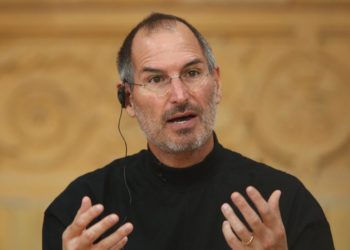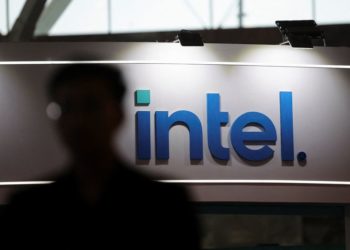First Columbia, Brown and UPenn folded. Harvard is reportedly looking for a way out after President Donald Trump cut its health and science research funding by billions.
Now academia writ large is trying to persuade him to back off his plan to slash universities’ budgets.
At Trump’s urging, the National Institutes of Health in February said it was cutting by more than $4 billion the amount it pays to universities to help them cover administrative and facilities costs tied to research grants. The overture from university lobbyists comes even as the universities have succeeded in blocking Trump’s plan in court — and have won the backing of key Republican lawmakers.
The universities’ eagerness to cut a deal shows that they don’t think they can hold off Trump indefinitely. A cut of the magnitude the NIH sought would put a major dent in their budgets, slow the search for breakthroughs in health and science, and enable foreign rivals to catch up, they say.
The federal government has long provided funding for university administration and facilities. These indirect-cost reimbursements are an add-on to scientific and health research grants. Trump allies accuse the schools of using the payments as slush funds to pursue progressive causes like diversity, equity and inclusion.
The universities deny that they are using the money that way but they are hoping to placate Trump by proposing to standardize how the government pays for their indirect costs. Currently, those fees are negotiated separately with each institution and they can vary widely. Trump says they’re way too high, pointing to the lower rates private foundations pay when they provide research grants.
“It’s been made extremely clear to us from day one by members of Congress that if we don’t do something, somebody else will,” Kelvin Droegemeier, a professor at the University of Illinois at Urbana-Champaign who’s spearheading the effort on behalf of a coalition of universities and research institutes, told POLITICO.
“They said continuing forward with the current model is not in the cards. We took it to mean we could help be a part of that change or wait for it to happen.”
Some leading Democrats on Capitol Hill and party activists across the country are leaning on universities to stand firm against Trump.
But the coalition is moving forward with talks anyway. “That’s really important for everybody to understand. You can’t fight something with nothing,” Toby Smith, a top lobbyist at the Association of American Universities, said at a recent town hall on paying for indirect research costs.
Among those with the most at stake, either if Trump succeeds in capping the fees or in a compromise, are the titans of the ivory tower: major research universities such as Harvard, Johns Hopkins and Yale that have long won indirect cost reimbursements in excess of 60 percent of the value of the underlying research grant.
Major research institutions command some of the highest rates in part because they have expensive and state-of-the-art research equipment and are located in areas with high utilities costs.
A federal district court judge in Boston blocked Trump’s plan to cap the fees at 15 percent in March. The national average now is almost 30 percent. The case is now on appeal.
In the meantime, GOP senators such as Appropriations Chair Susan Collins of Maine and Alabama’s Katie Britt have protested the administration’s plan because it would hurt the public universities in their states. Collins noted that Congress has explicitly barred the administration from tinkering with the indirect cost system in spending legislation.
But even as schools were seeking relief in court and in Congress, a cadre of groups that lobby for them, including the Association of American Universities, the Association of American Medical Colleges, the Association of Independent Research Institutes and the American Association of State Colleges and Universities, was working out a compromise plan to offer Trump. Others in the crosshairs of Trump’s bid to cut costs, such as hospitals and research institutes, are working with them.
“Those who say, ‘Well, let’s just wait and see, maybe the lawsuits will be fine.’ No, there is change happening,” said Droegemeier, who has some cache in Trump’s orbit because he led the White House Office of Science and Technology Policy during the president’s first term.
“I can tell you for sure that [the White House Office of Management and Budget] is working on things. We’re working on things. We’re working together. But change is coming, and if people simply deny that they’re fooling themselves — they’d better prepare for change one way or another.”
This week, Trump tried a new tactic to wrest indirect funding from top-tier universities by issuing an executive order calling for agencies to give preference to universities with lower indirect costs when issuing awards.
The university-led group announced this spring that it was working on a new model, one that was “simple and easily explained,” and in a nod to the administration’s priorities: “efficient and transparent.”
The Financial Accountability in Research, or FAIR plan, would consist of two options for research organizations to recoup facilities and administrative expenses from the government. The first, a detailed accounting of indirect project costs, and the second, a shorter, simpler fixed percentage of a project’s budget. (Think itemized deductions vs. the standard deduction on federal taxes.)
“The biggest difference is rather than having an indirect cost rate, which is negotiated across the entire university, this model calls for indirect costs to be estimated for every project,” Jeremy Berg, former director of the National Institute of General Medical Sciences, an arm of the $48 billion grant-giving National Institutes of Health, told POLITICO.
A lobbying push
Debate over how much the government should pay for indirect costs has raged for decades.
Both former Presidents Bill Clinton and Barack Obama suggested capping facilities and administrative costs, to no avail.
In Trump’s first term, he proposed a 10 percent cap on indirect costs — meaning a $100 grant would come with a maximum of an additional $10 for administration and facilities. Lawmakers stopped him by adding language to appropriations bills barring the change.
After the Trump administration announced the 15 percent cap in February, Droegemeier reached out to House Appropriations Chair Tom Cole (R-Okla.) to see if universities and Congress could work together on a compromise.
Soon, Droegemeier had helped assemble a team of seasoned subject matter experts beyond the traditional academic echo chamber, including representatives from hospitals and medical centers, foundations, private companies, and former government officials from NIH and OMB.
Droegemeier’s team then worked to engage Senate appropriators, including Collins and Britt. They briefed Sen. Bill Cassidy (R-La.), the chair of the Health, Education, Labor and Pensions Committee. More recently, they’ve talked with the offices of Sens. John Kennedy (R-La.), Cindy Hyde-Smith (R-Miss.), Shelley Moore Capito (R-W.Va.) and Bill Hagerty (R-Tenn.), as well as Democrats.
Since February, the team held two weekend fly-ins and a virtual retreat to work on the model together and multiple town halls to explain the FAIR plan and get feedback from universities.
Beyond Congress, the group has sought buy-in from the Office of Management and Budget, the White House arm that is leading Trump’s cost-cutting initiatives.
Droegemeier worked with OMB Director Russ Vought during Trump’s first term.
A critical juncture
The administration has appealed Judge Angel Kelley’s March decision, which she made permanent in April, to the federal appeals court in Boston.
In the meantime, senators on the Appropriations Committee approved language in their version of the spending bill for the National Institutes of Health that restricts changes to the current methods of setting indirect costs.
Even so, Collins floated the new model to NIH Director Jay Bhattacharya at an NIH budget hearing in June and signaled her support for a compromise.
She called Droegemeier’s plan “far fairer” than Trump’s flat rate and said she believed it would “increase accountability.”
Bhattacharya said he had talked with Droegemeier during the early planning stages of the model. “I think they’re quite promising,” he said.
Talks are expected to resume when Congress returns from recess next month.
The bigger challenge may be getting OMB to sign off. So far, the university groups and OMB have not been able to reach an agreement to present to lawmakers, according to a person familiar with the negotiations on the congressional side granted anonymity to avoid influencing the ongoing discussions. One sticking point for OMB: The White House wants assurances the plan will cut spending on facilities and administrative expenses, the person said.
From Droegemeier’s vantage point, they’re working together on finer points of the model, and talks with OMB are ongoing.
The university team isn’t promising cost reductions. That’s not their role, according to Droegemeier. Instead, the model is designed to show what it really costs to do research. Then the government and lawmakers can decide what they want to pay for.
Berg, the former NIH official, thinks it has the potential to be cumbersome to implement, but more transparent.
Like Droegemeier, he doesn’t think schools have a choice.
“There’s been so much of a fuss made at this point,” Berg said, adding, “If the universities dug in their heels and said, ‘We like the old model.’ That’s not going to happen. Instead, there’ll be some fixed cap, the way the administration proposed out of the blue.”
“From that point of view, it’s a thoroughly sensible thing to do, and I’m supportive of the effort, because I think it’s the best path to ending up somewhere that’s actually rational.”
The post Why the ivory tower wants a deal with Trump appeared first on Politico.




